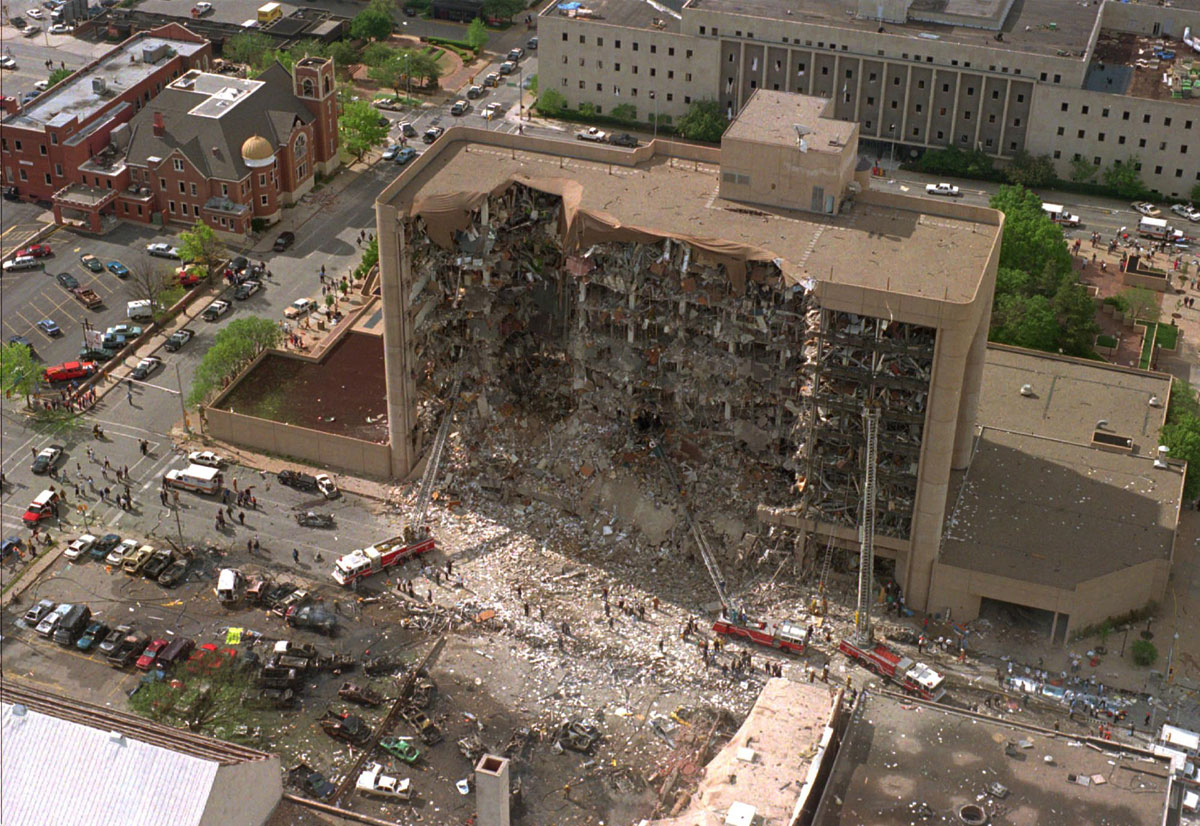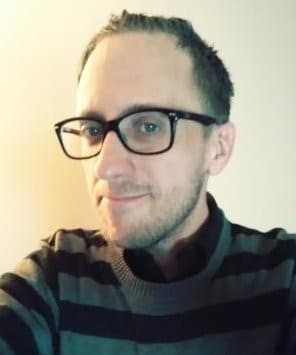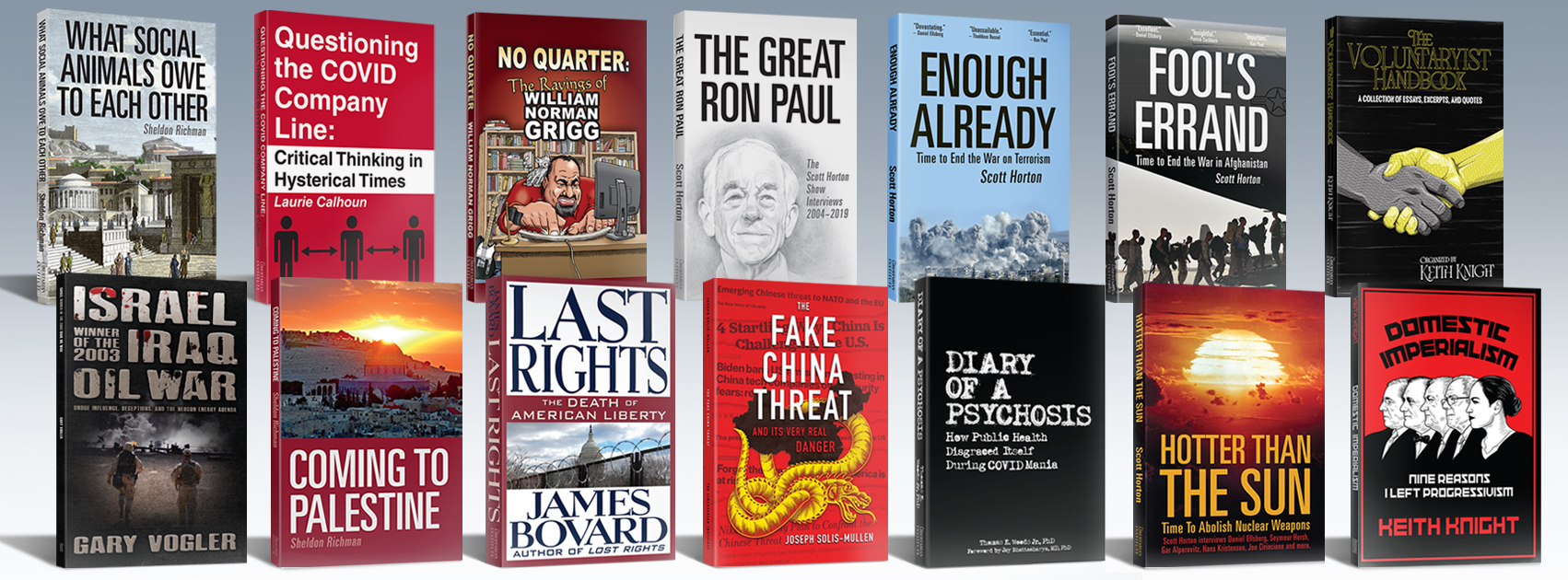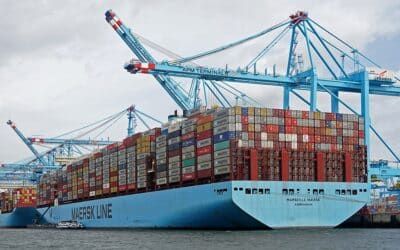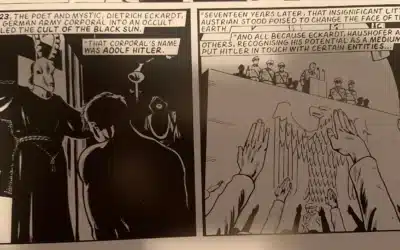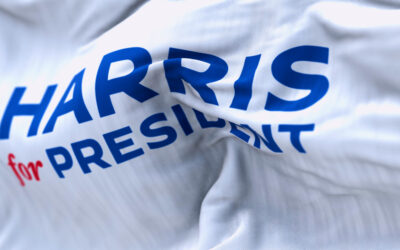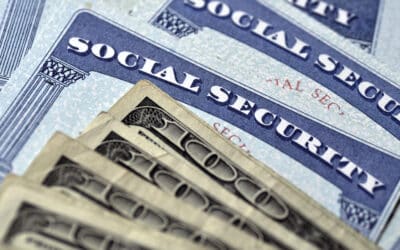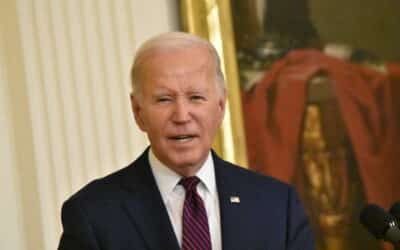When I began compiling material for what eventually became “The Oklahoma City Bombing Archives,” I was simply doing background research for a book. Over a period of several years I used commercial databases, libraries, and services that allowed me to scan newspaper and magazine reports, transcripts, and other sources for relevant material.
In addition to standard news media sources, the scope of this research archive expanded after contacting several researchers on this subject and asking for their advice and any materials that might be useful. A number of other researchers contributed additional documents and case material to round out the archive.
As I neared the end of the most intensive period of research, I realized that this archive had grown to include more than enough primary sources to provide any student, journalist, or researcher with an excellent starting point to help kickstart their project.
By my thinking, in the right hands this archive could conceivably contribute to someone writing a stellar non-fiction book, or at least a few articles. In addition, my hope was that this archive might also get people interested in this case when they otherwise might not give the subject any second thought.
With this goal in mind I began strongly considering an effort to bring this research material to the public on a website where anyone could access it, or search it. Thanks to support from fellow researchers and folks at the Libertarian Institute we now have this archive of material available for everyone.
There are so many things in the archive that, for a newcomer, it can be overwhelming to decide where to start, or even know what to look for. It’s with that in mind that we’ll go over some highlights from just the news reports found in this archive that a person might want to take a closer look at–some of the more interesting feature articles on the case. These are just some of the MSM pieces you’ll find here, in addition to the many FBI and ATF documents, court transcripts, and other records on the case.
Magazine & Newspaper Articles
This feature piece from Mother Jones magazine details the death of Kenneth Trentadue. While authorities claim the death was a suicide, and tried to cremate the body, Trentadue’s family prevented the cremation and had the body examined which showed clear signs of beating and torture. An Oklahoma medical examiner’s conclusions support this and mounting details emerged that appear to link Trentadue’s murder to the nationwide manhunt for one of Timothy McVeigh’s accomplices in the bombing, “John Doe #2.”
This feature piece from author and Washington Post contributing reporter Peter Carlson centers on Timothy McVeigh’s mysterious accomplice in the bombing, “John Doe #2.”
- Randy Ellis, et al, ‘Eyewitness Pointed Way for Suspects.’ Saturday Oklahoman & Times, 29 Apr. 1995.
This report has quotes from a service station mechanic, Mike Moroz, who gave directions to Timothy McVeigh on the morning of April 19, 1995. Moroz said that McVeigh had a passenger in the Ryder truck with him, and he later pointed McVeigh out of a lineup for the FBI. You can read Moroz’s 302 report [here] and see video of Mike Moroz describing the encounter [here (video)]
A great piece from The New Yorker about Oklahoma investigative reporter J.D. Cash’s groundbreaking stories published by the McCurtain Gazette. Cash’s reporting would win him a prize in investigative reporting from the Oklahoma Society of Professional Journalists and two Pulitzer nominations. This is one of the few mainstream media pieces to credit J.D. Cash’s reporting.
This stunning report goes into detail concerning the existence of surveillance camera footage depicting the Oklahoma City bombing. Though the FBI denies any footage exists, this report has details concerning an FBI internal investigation into one Los Angeles FBI agent’s attempt to sell the footage to Dateline: NBC for $1 million. This report, when examined in conjunction with October 1995 FBI documents [here], and [here], confirm the attempted sale.
News media accounts from October 1995 [here, here] confirm the existence of the tapes, showing two passengers in the Ryder truck, and a Secret Service timeline [here] describes what is shown on the footage. Finally, a fall 1995 KFOR-TV broadcast reported and did a recreation of what law enforcement sources said appears on the video [here].
A 1999 FOIA lawsuit revealed that the FBI possessed up to 22 different videos depicting the downtown OKC area [here]. Meanwhile, an internal FBI evidence log [here] states that at least two of those videos show the bombers and/or Ryder truck. Those two videos were taken from The Journal Record Building (designated #Q7) and from the Southwestern Bell building (designated #Q77).
This Newsweek cover story was about an FBI Major Case Undercover Operation dubbed “PATCON.” PATCON targeted white supremacist groups throughout the country in the 1990s, and one of it’s undercover informants, John Matthews, crossed paths with Timothy McVeigh during his time working PATCON. When this piece was published, Newsweek’s editors so heavily sanitized and edited the story that central details concerning Timothy McVeigh were excised from the final story. This is the original copy of this groundbreaking story—as submitted to Newsweek’s editor—before half of the story was gutted. For the redacted, final print edition — without the McVeigh details — click here.
This piece, by investigative reporters J.D. Cash and Roger Charles, details connections between the FBI, a group of white supremacist bank robbers, and Timothy McVeigh. J.D. Cash—and the FBI—began investigating links between the bank robbers and Timothy McVeigh early in the FBI’s investigation.
Washington Weekly contributor and author of The Oklahoma City Bombing and the Politics of Terror, David Hoffman, writes about the disturbing death of Oklahoma City police officer Terry Yeakey. Official reports suggest his death was a suicide, but the details don’t support that conclusion.
In this story, published a day after the bombing, federal judge Wayne Alley says that his office received a warning that some sort of attack might take place on April 19. The threat was so serious that Judge Alley didn’t show up for work that day. What did the feds know about what might happen on April 19? Other early reports detail unspecific ‘threats’ the feds received before the blast [here, here and here].
This is one of the very first news reports to describe a witness who observed a bomb squad truck and personnel in the vicinity of the Murrah building and courthouse in the hours before the bombing. Many of these witnesses’ accounts would later be detailed by the Oklahoma Bombing Investigative Committee’s 2001 Final Report, and would be interviewed by a 1997 grand jury empanelled to investigate the bombing. No sufficient explanation has been provided as to why a bomb squad and sniffer dogs would be where they were that morning.
In fact, it appears that the subject of bomb sniffer dogs seen at the courthouse and Murrah building appears to be a very sensitive subject. When U.S. Postal worker Debbie Nakanashi was set to testify before a Grand Jury investigating the bombing, she was told by U.S. Attorney Steve Mullins and Postal attorney John Hollingsworth that she was explicitly barred from speaking about bomb sniffer dogs when she testified before the grand jury (source: interview from transcript U.S. FAIR Justice Act HR4105 07/27/2000 pp 79).
This report details the recollections of Lynda Willoughby, proprietor of the private mailbox business where Timothy McVeigh received his mail. According to Willoughby, the man depicted in the “John Doe #2” sketch picked up McVeigh’s mail once, and that an unidentified Kingman resident picked up McVeigh’s mail 5-6 times. The piece raises the specter of additional accomplices, close enough to McVeigh to pick up his mail for him.
At the end of April 1995, news reports began to surface that said law enforcement sources had surveillance camera footage from Oklahoma City which showed Timothy McVeigh’s Arizona license plate affixed to a second vehicle, widely reported as having been a brown truck. This report says “The videotape from a security camera on a nearby apartment building shows both the Ryder truck believed to have carried the massive bomb and a second vehicle—not the Mercury—bearing the Arizona tag, a federal law enforcement official in Washington said Friday.” Later, the FBI would claim John Doe #2 did not exist, no second vehicle was ever officially identified, and the video footage cited by law enforcement sources here would never surface.
This lengthy LA Times report contains many details, prominent among them the claim that the FBI had located a second vehicle involved in the bombing, and that “authorities think that three vehicles entered Oklahoma for the bombing.”
The report also describes what witness Gary Lewis saw, “two men inside a yellow Mercury Marquis speeding away from the Journal Record building” prior to the bombing. Lewis’ sighting was documented in FBI 302 reports [here, here] and was touted by FBI agent John Hersley in an April 29, 1995 preliminary hearing [here].
This report says that the FBI had a “videotape from a security camera” which shows the Ryder truck and another vehicle (not the Mercury Marquis) bearing Timothy McVeigh’s Arizona license plate.
This report is interesting as it details a little-known fact that is a key piece of the investigation: a brown pickup truck. The report says that “authorities were trying to enhance the image of a brown pickup truck license plate captured on videotape by a camera in the car of the state trooper who arrested McVeigh.”
An April 20, 1995 FBI teletype stated that “several leads are outstanding relative to a brown pickup” truck [here].
In addition, when McVeigh was pulled over by State Trooper Charlie Hangar, the brown pickup that pulled off to the side of the road in tandem with McVeigh was spotted by at least two witnesses—Kevin Brown [302 report here] saw it, and so did witness Scott Gregory who testified at the Nichols State trial.
As with all of the other videotape evidence in this case that shows possible suspects or vehicles, Hangar’s dashcam footage showing the brown pickup pull over has never been produced.
Virtually every article written by J.D. Cash is worth reading, but this one is included because it dovetails with the previous report concerning a brown pickup truck.
Cash interviewed witness Lea Mohr who just minutes before 9 A.M., circled the Murrah Building waiting for the Ryder truck to leave the handicapped parking spot.
Mohr, upset the handicapped parking space was taken by a non-handicap vehicle, took pictures of the Ryder truck with her disposable camera. According to Mohr, there was a brown pickup truck parked next to the Ryder truck.
Interestingly, a December 21, 1995 McVeigh Defense team memorandum titled ‘Motion To Require The Government To Produce Exculpatory Evidence’ (pp 16-17) says that the brown pickup truck in Mohr’s photographs had McVeigh’s license tag on it.
This report was explosive—a major turn in the case: a third arrest. However, it would also prove to be one of the most mystifying parts of the whole OKC bombing story. Announcing a third arrest in the OKBOMB case, The Houston Chronicle reported—exclusively–that an Arizona biochemist named Steven Colbern had been “identified” as a suspect in the bombing. The article goes on to say that “Colbern was identified through his brown pickup. It was captured, by chance, on video taken from the state trooper’s car that stopped Timothy McVeigh for speeding” and that Colbern’s truck could be seen pulling over to the side of the road ahead of McVeigh’s vehicle on the dashcam footage.
The most interesting claim in this report is that “sophisticated enhancement techniques were used to improve the video until investigators could read the license plate number.” However, this story makes even less sense when you look at FBI documents from the time. A May 3rd, 1995 airtel from FBI SA Thomas Ravenelle–dated nine days before Colbern’s arrest—states that “COLBERN has been eliminated as a suspect in this matter” [FBI document].
If his license plate was recorded in connection with the bombing, how was he eliminated as a suspect? And if he was eliminated as a suspect, then why was he then arrested a week later? What the hell is going on here? To make matters more confusing, Colbern cooperated with authorities and signed two confusing official statements to the federal government which are, in some parts, nonsensical. In these statements, Colbern admits to having known gun dealer Roger Moore under the alias of “Bob Miller” and further to have spoken with his girlfriend (real name: Karen Anderson) on the telephone, with Colbern oddly saying that the girlfriend also went by “Bob.” Within his two statements Colbern said that he had never personally met Mr. McVeigh, but that he knew of him as “Tim Tuttle” and, curiously, Moore/Miller had told him that “[McVeigh] was a master of making fake license plates.”
Whatever the case may be, Mr. Colbern was eventually released without any charges in connection to the bombing, and where he fits in the puzzle remains a mystery to this day.
This news report is one of the first to reference the white separatist community Elohim City in connection to the OKC bombing. The report says that Timothy McVeigh visited the white separatist community and that “the FBI is close to arresting a group of major players” in the OKC bombing investigation.
A senior law enforcement official told Newsweek magazine that “this thing involves husbands and wives as well as children as young as 12.”
Two days later, the spiritual leader of Elohim City, Robert Millar, would hold a press conference denying any connection to McVeigh, and no arrests there would be made.
One day after it’s reported that the FBI is “close to making arrests” in the bombing—in a report alluding to Elohim City— Timothy McVeigh was publicly linked to Elohim City, with this report saying he called the compound on April 5.
This Newsweek piece says that Timothy McVeigh and another man were spotted prowling around federal buildings in Omaha, Nebraska and Phoenix, Arizona, something that was first reported in April. This subject would be touched on again 25 years after the case in an April 20, 2020 report [here] where the ATF’s sketches of the two men were first published.
Another interesting detail is reported in that “for the past year, the ATF and the Army Corps of Engineers have been blowing up car bombs at the White Sands Proving Ground in New Mexico” as part of a project called DIPOLE MIGHT. Curiously, an ATF agent assigned to DIPOLE MIGHT happened to be in Oklahoma City on April 19 and it is reported that within minutes of the bombing, agents trained under DIPOLE MIGHT were at the crime scene. Yet, almost the entire ATF office was vacant that day. Where were these DIPOLE MIGHT agents positioned that morning to appear at the Murrah building within minutes?
This report details two separate encounters with still-unknown accomplices connected to McVeigh. The report says that Terry Nichols, Timothy McVeigh, and an unknown third man with long hair ate lunch together on April 18, 1995 at a Subway in Kansas. The report also details a delivery of Chinese food that was made to McVeigh’s room at the Dreamland Motel by deliveryman Jeff Davis. A sketch was made of the man Davis made the delivery to [here] and Davis insists the man wasn’t McVeigh.
This story is included for the sheer absurdity and shade of inter-agency rivalry. Thomas Constantine, the head of the DEA, says he “amazed” that the FBI hasn’t captured John Doe #2 yet — at May 5 this puts John Doe 2 at large for approximately two weeks.
This piece details the April 19, 1995 execution of white supremacist Richard Wayne Snell and talks about how Snell said that there would be a bombing or terrorist attack on the date of his execution.
Other reports would detail Snell’s seeming foreknowledge of the attacks and indicate that the FBI was investigating. (here).
- ‘Surveillance Tape Shows Shadowy Passenger In Bomb Truck.’ The Tuscaloosa News, 28 Oct. 1995, p. 3A.
On October 28, 1995, newspapers across the country reported that surveillance camera footage of the bombing shows two people in the Ryder truck that delivered the bomb. The description of what is on the tape was given by unidentified “law enforcement sources” and matches descriptions provided by witnesses at the scene. This headline is just one of many that ran in papers that week in October. Find more at the Libertarian Institute’s news archive here.
This report concerns Oklahoma City bombing documents that were unsealed in the first week of November 1995, which include details about two witnesses who saw Timothy McVeigh “with another person” leaving the scene of the crime.
This piece details a half dozen witnesses who spotted Timothy McVeigh with an accomplice both in Oklahoma City on the day of the bombing, and in two rural Kansas towns in the days before the blast. The witnesses detailed in this report were interviewed by the FBI, and in some cases they also testified at trial and before a grand jury empanelled to investigate the bombing.
This radio broadcast features interviews with witnesses who spotted Timothy McVeigh with John Doe #2. This includes mechanic Mike Moroz, who was interviewed by the FBI several times and pointed McVeigh out of a lineup for the FBI, as well as café owner Barbara Whittenberg, among others.
These witnesses continued to be covered in the press with varying degrees of detail throughout McVeigh and Nichols’ trials where the majority of them were never called to testify as to what they had seen.
This piece is just one of many that detail possible connections between Timothy McVeigh and the white separatist community known as Elohim City. Notably, this article says that the Southern Poverty Law Center’s director, Morris Dees, said that McVeigh had visited Elohim City “several times.” The article also covers details concerning Richard Wayne Snell, who was executed on April 19, 1995, and states that Snell was visited in prison by Elohim City’s Robert Millar “every day, many hours a day” before his execution date and that Snell’s body is buried at Elohim City. This article is one of very few mainstream media pieces to mention German national Andreas Strassmeir, who served as chief of security at Elohim City and was the subject of an ATF undercover investigation, among other things.
In June of 1995, the FBI denied the existence of John Doe #2, asserting that the witnesses all must be wrong. The FBI put forward a theory saying that the witnesses from Elliott’s Body Shop—where the bomb truck was rented—were mistaken about the second suspect and confused him with an Army private who had visited the shop on April 18, the day after McVeigh did.
The problem with that theory, however, is that Eldon Elliott wasn’t at work on April 18 and he remembers seeing McVeigh with another person. This report reveals that federal prosecutors didn’t believe the FBI’s story about Bunting, and that John Doe #2 was still considered to be a suspect. Quoting prosecutor Joseph Hartzler, the piece cites a memo written to defense attorneys which says “the existence and identity of this John Doe II, whom we are confident is not Mr. Bunting, is the subject of a continuing investigation.”
British journalist Ambrose Evans-Pritchard interviewed German national Andreas Strassmeir, who in April of 1995 was serving as “chief of security” at the Elohim City white separatist compound. While Strassmeir denied knowing anything about the bombing, controversial comments he made to Evans-Pritchard seemed to indicate otherwise. Here, Strassmeir is quoted saying “the right-wing in the US is incredibly easy to penetrate if you know how to talk to them. Of course it’s easier for a foreigner with an accent; nobody would ever suspect a German of working for the federal government.” He also suggested that the bombing was some sort of sting operation, which had been penetrated by a government informant: “the ATF had an informant inside this operation. They had advance warning and they bungled it. What they should have done is make an arrest while the bomb was still being made instead of waiting till the last moment for a publicity stunt.” Asked if he thought the alleged informant would ever speak out, Strassmeir replied: “How can he? What happens if it was a sting operation from the very beginning? What happens if it comes out that the plant was a provocateur? What then? The relatives of the victims are going to go crazy, and he’s going to be held responsible for the murder of 168 people? Of course the informant can’t come forward. He’s scared stiff right now.”
This explosive report was followed-up on by J.D. Cash of the McCurtain Gazette, in a May 28, 1996 piece here.
The U.S. media was largely silent on the issue, though a piece did appear in the rural Tennessee newspaper The Tennessean, here.
This short piece details how prosecutors in Timothy McVeigh’s trial decided not to present any eyewitnesses who could place the defendant, Timothy McVeigh, at the scene of the crime.
The FBI had over two dozen witnesses who saw McVeigh in downtown Oklahoma City on the morning of the bombing. One of those witnesses, Mike Moroz, picked McVeigh out of a lineup of people at the FBI’s Oklahoma City command post in the days after the bombing. The most notable thing about these eyewitnesses is that every one of them saw McVeigh with another person. Were no witnesses called to testify because they would have testified that McVeigh wasn’t alone?
- Kevin Flynn, and Lou Kilzer. ‘John Doe 2 Remains A Mystery.’ Rocky Mountain News, 3 Mar. 1997.
This piece details numerous John Doe #2 witnesses. Of note is witness Kyle Hunt, an Oklahoma City bank executive who passed a Ryder truck and a Mercury Marquis in traffic as he drove to a meeting in downtown Oklahoma City. Hunt “told the FBI he is certain the car’s driver was McVeigh and that there were two other men in the car.” At least one person had to have been in the truck, making a total of four people. Read Kyle Hunt’s FBI 302 report [here]. Hunt also testified before a grand jury empanelled to investigate the bombing in 1997.
A number of reports were published in early March 1997 which linked another suspect to the Oklahoma City bombing investigation. These reports center around a man who went by the name “Robert Jacquez.” Jacquez was spotted with Timothy McVeigh and Terry Nichols in the fall of 1994, seeking to buy property in the Missouri Ozarks. The man was talked to three witnesses, real estate broker Bill Maloney, his coworker Joe Davidson, and the real estate firm’s secretary. The FBI continued to investigate the man known as “Jacquez” for up to 5 years, never making an identification. Click here to view a sketch of the suspect from the FBI investigation.
Additional reports from March of 1997 on this suspect: CNN, AP, TIME.
This report concerns witness Rodney Johnson. Johnson drove a food delivery truck and on his route drove past the Murrah building every day around 9:00 AM. On the morning of the bombing, Johnson had to slam on the brakes as two pedestrians crossed the street in front of his vehicle, with Johnson getting a good look at both men. Johnson described what he saw to the FBI on the night of the bombing, and described the two men he saw before the FBI sketches were released. He later testified before the 1997 grand jury empanelled to investigate the bombing. Read Johnson’s 302 report here.
In mid-January 1998 a number of reports appeared which linked Timothy McVeigh with white supremacists Cheyne and Chevie Kehoe. The Kehoe brothers were on trial, and the manager of The Shadows Motel & RV Park said that McVeigh had visited Kehoe at the motel. Additionally, the motel manager said that on the morning of the bombing, Chevie Kehoe came into the office about 45 minutes before the blast and asked the manager to turn the TV on and put it on the news. When news of the bombing came on, according to the manager, Kehoe began celebrating, saying “it’s about time.” The manager said that “days before that, he had mentioned to me that there’s going to be something happening on the 19 and it’s going to wake people up.”
Many additional reports on Kehoe surfaced that week. Just a few of these reports can be found here, here, and here.
According to this Rocky Mountain News piece by Kevin Flynn, more than 43,000 “lead sheets” and documents were never turned over to the Nichols defense team during his federal trial.
Among these thousands of pages of documents are FBI reports concerning John Doe #2, other suspects, and other vehicles. These reports were written by the FBI during their investigation and should have been provided to the defense team but were withheld.
Just a week after it was first reported that thousands of pages of documents had been withheld from the McVeigh defense team, the Los Angeles Times reports that additional materials had been found that were not turned over.
Many of these documents relate to a suspect known as Robert Jacquez, and consist of 302 reports, lead sheets, and other documents generated during the investigation. Just three days prior to this piece, Fox News reported that many of the withheld documents “pertain to John Doe #2, a suspect who was never identified.”
This report is about a specific FBI document written in early May 1995. That document, written by San Francisco based FBI agent Thomas Ravenelle, says that “the Oklahoma command post has directed all offices to hold Unsub No 2 leads in abeyance.” That is to say, the command post has directed all offices to stop investigating John Doe #2 leads. Less than a month after the bombing, the FBI appears to have halted it’s search for the second suspect, long before announcing that the man “doesn’t’ exist.” Why did the FBI take this action? Is it because they did find out who John Doe #2 was, and like Andreas Strassmeir said, he was an informant? To view the document cited in this piece click here.
————–
There are many more news reports that feature key details concerning the bombing and it would be difficult to cover all of them here, though an effort has been made to highlight reports that have details that are exceptionally noteworthy.
In addition to these reports, it’s strongly recommended that people read all of the reports written by J.D. Cash, published by the McCurtain Gazette. You can find most of those stories at the Libertarian Institute’s archive here.
Richard Booth is an independent researcher who has spent over five years investigating the Oklahoma City bombing. His entire archive is now available exclusively at the Libertarian Institute.

